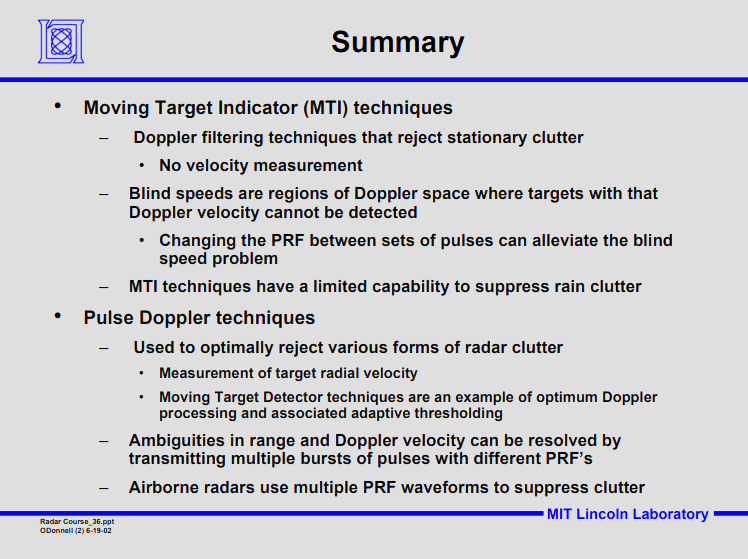Hi all, this discussion is about MTI mode present on some aircraft. What is it, how does it work, and is it correctly implemented in War Thunder?
Now, I… don’t have a clue how this stuff works. I’m willing to bet someone here does though.
Here’s a PowerPoint I found:
Now, there’s a whole bunch of stuff I can barely understand, but I can read:

So, I have a few questions.
-
How does MTI in-game filter out chaff? Chaff is absolutely not stationary, especially immediately after it has been deployed by a target aircraft.
-
How come an MTI track in-game shows me my target’s velocity?
-
Why would anyone ever use, say, HPRF Pulse Doppler when MTI as represented in-game is so much better? What are the actual downsides of using this?
My radar theory is a bit rusty and was mostly nav/sea but the basics are the same.
MTI will pick up chaff but it will quickly filter it out as the pieces are very light and very draggy and decelerate rapidly below the velocity threshold. Essentially you see a big bloom that quickly dissappears and the target pops up again. That’s fine for breaking radar lock but the search function will find you again.
The whole point of MTI is velocity based tracking so the radar will know the targets speed so why wouldn’t it display it? It’s good for clearing clutter, although it can also hide legitimate contacts, one reason it’s not used for navigation as raw data is needed both operationally and legally.
One problem with MTI is you may need a higher relative velocity threshold. If the target is at a constant angle and distance then velocity will appear to be zero. PDR suffers far less from velocity blind spots, but at the expense of potential range ambiguity as well as clutter including chaff.
So it’s a bit of win/lose between the two types and which is the best depends on the role and environment. Some radars have switchable modes although it does make them more complex as the hardware isn’t always compatible.
